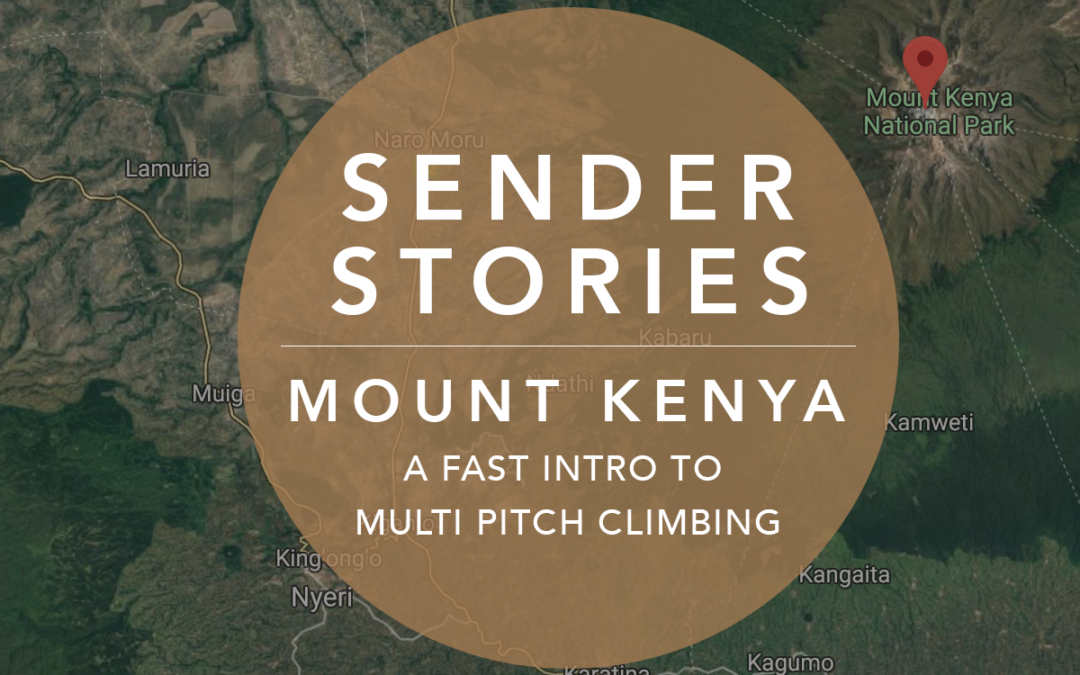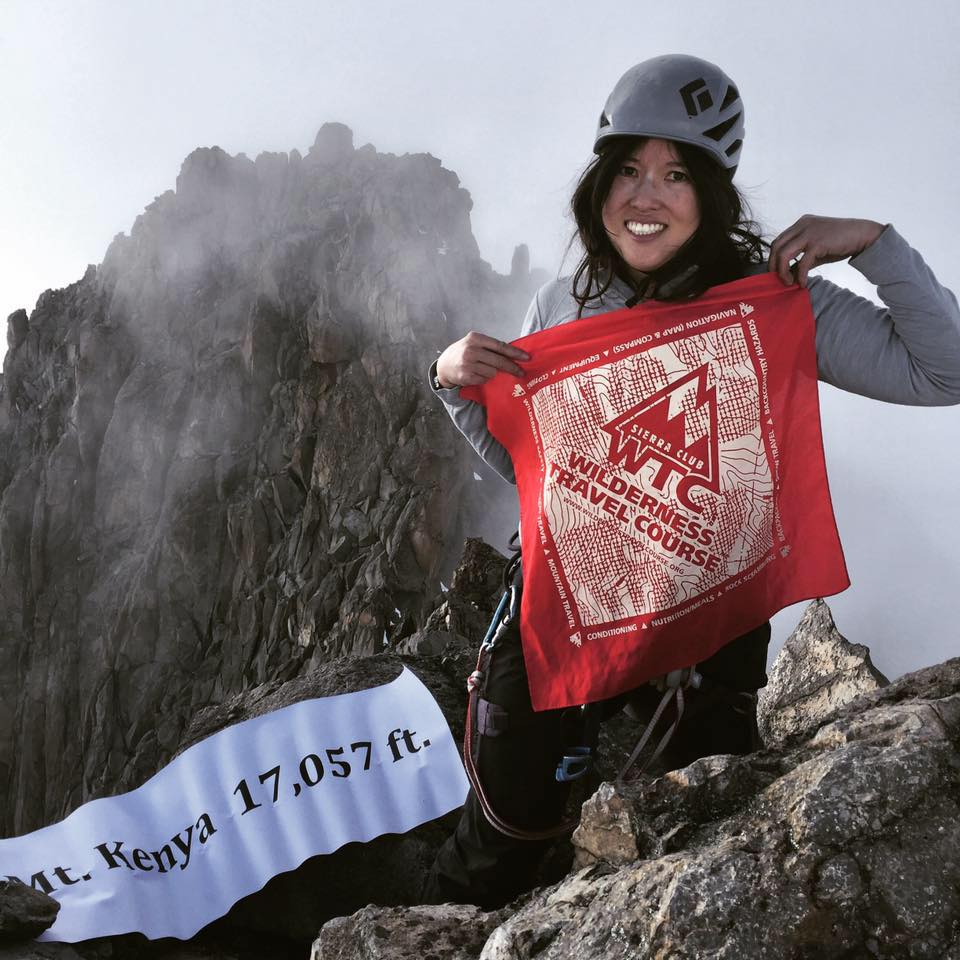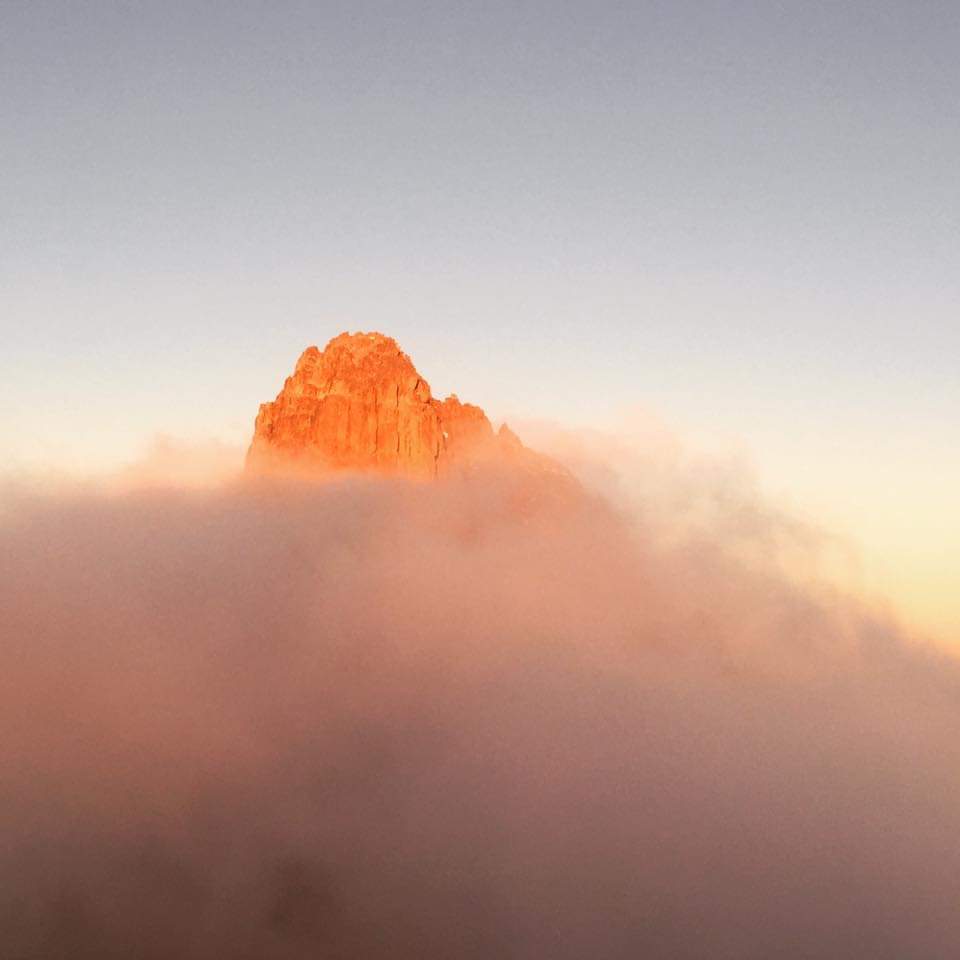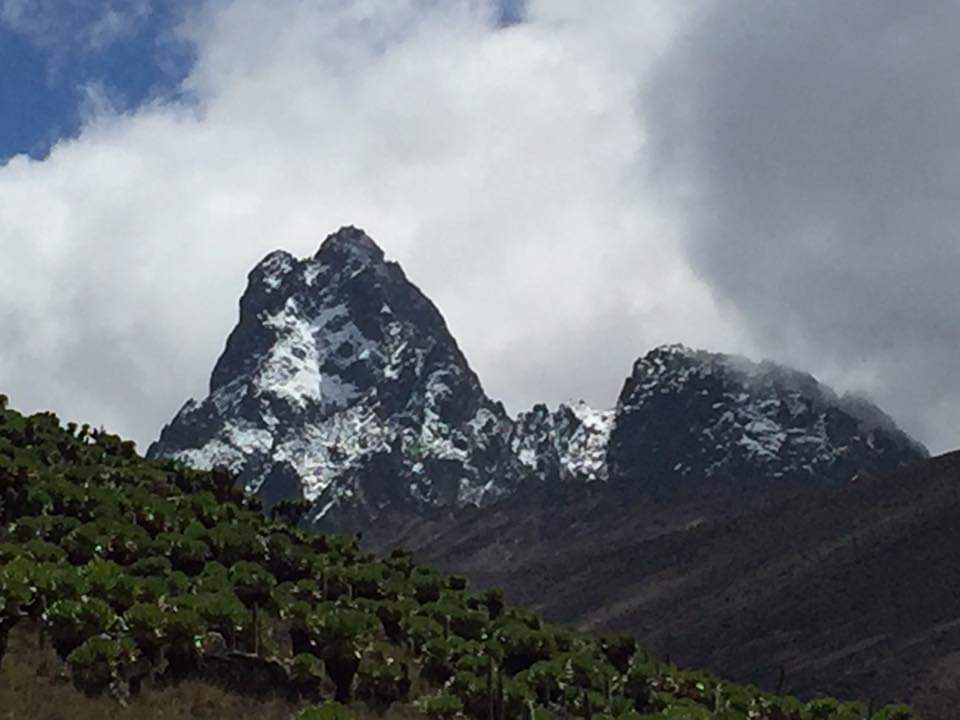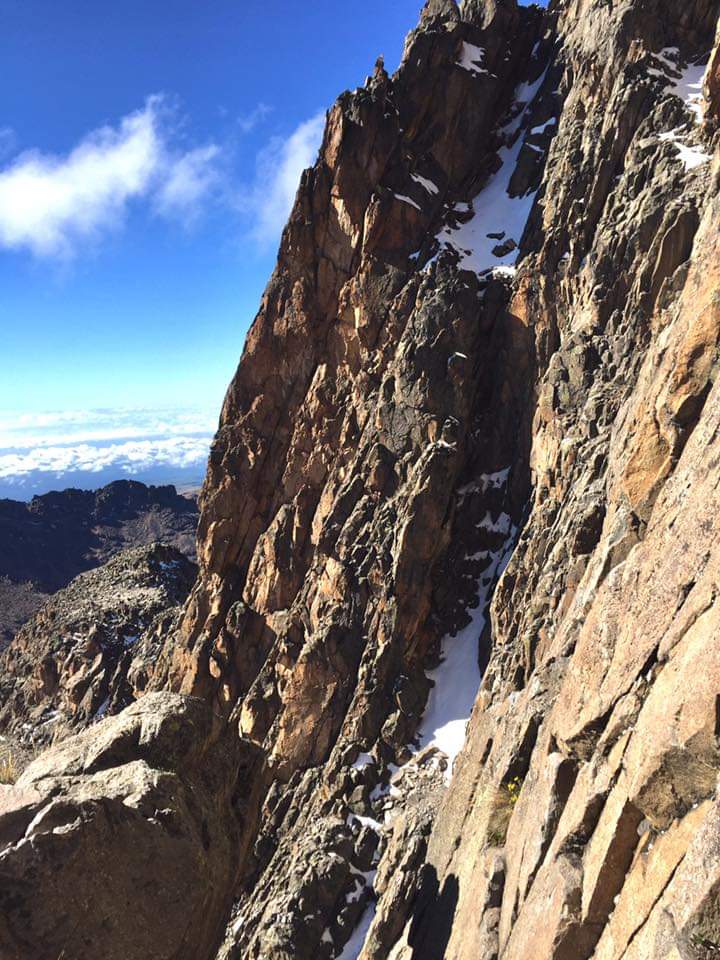We all have stories to tell and we want to hear and share them with everyone! Sender Stories is now dedicated to our members and community to share your experiences and of course, Share Our Passions, Find Creative Beta, Learn from our Projects and Send Them, See from Other People's Perspective, and Climb Together! Sender One embraces personal experiences being told within our community and encourage all to share!
Words and Pictures by Amy Huang
"My name is Amy and I have climbed at Sender One LAX since the beginning of 2017. My passion for rock climbing started when I took a Wilderness Travel Course (WTC) and climbed peak of 4377 ft. in Joshua Tree. It was then that I fell in love with rock climbing.
On December 28, 2018 I decided to rock climb up to Nelion (17,027 ft.) and Bation (17,057 ft.), peaks on Mt. Kenya. Mt. Kenya was ideal because it was the second highest peak in Africa at 17,057 ft and it required rope climbing to get to the summits. I could have easily done rock-climbing peaks in the U.S. but I wanted an international adventure. I spent a total of 7 days hiking in Kenya.
One of my practice grounds was Sender One LAX. Since I have done top roping consistently for about 2 years, I decided to try lead climbing. I took the lead climbing class at Sender One and became lead certified. Lead climbing at Sender helped me become more confident in my rock climbing abilities.
I did not know that the approach to Mt. Kenya’s rock climbing would take 2 hours from the Austrian Hut (15,700ft) on clumps of loose talus. Nor did I know that I would be wearing my La Sportiva snow boots, which acted like “death traps” for my feet. I was told that when I got up to the second highest peak, Nelion, we would have to down-climb and cross a glacier field and use our ice axes and crampons, to get to Batian, the higher peak. Unfortunately these snow boots were the only ones that fit my crampons. My snow boots however, were not ideal on rock as it made it very slippery. The only other shoes I carried in my pack were my climbing shoes. My snow boots made me feel like I was hauling 2 additional pounds on each leg.
At 5AM, on December 28, 2018 after an early breakfast, we began the approach to the base of the mountain. When we got to the start of our climb, it was 7AM. I was a bit cold changing into my climbing shoes. As I put my snow boots into my pack, I realized that they took up the majority of my 40-liter pack. My water bladder was frozen, but luckily, I had about a liter of hot water stored in a thermos. My guide would be on lead setting up the cams and the bolts while I belayed him from below. Looking at the rock, the hand and footholds looked straightforward, I actually thought it could be possible to free-solo Mt. Kenya. Little did I know that there were some tricky sections where I would fall. After my guide would set the route, I would tie myself in and climb up the rope and clean what he had done while he belayed me from above.
Sometimes I had a difficult time understanding my guide so I had to have him repeat whether to “take” as there was one point he had been afraid of falling, and when he was all done setting up the route, I had to confirm with him that it was ready for me to climb. The grade ranged from 5.4-5.8, and there were times I had to traverse to the side or down climb.
When we had done the first 3 pitches, my guide asked me for the time. I responded with 9:10AM. He was concerned that we would not have the time to climb either peak. I frowned, as I did not want to fail. Determined, and probably a big mistake, I climbed faster only to fall 10 ft., flip upside down and hit my back against the rock. Luckily, I was wearing my helmet, which protected me from concussing, and my pack cushioned my back from getting severely hurt. I decided to shed my layers so I wouldn't overheat. Since I could not fit my extra layers in my pack, I had to leave it on one of the pitches. I thought maybe it would not get too cold and the only thing I could fit in my pack was a thick long sleeved-shirt. At the time, I was only wearing one layer of pants and one shirt.
My guide was surprised that I was able to get through the difficult sections in a reasonable amount of time. So he said Nelion was possible to summit, but not Batian which involved rappelling down, crossing the glacier and 5 more pitches. So happily, we left our ice axes and crampons on another pitch since we would not be using them.
We arrived at the summit of Nelion peak at 4:30PM. Nearby, there was the Howell Hut where some people bivouac or spend the night before they continue to Batian. At that moment, I only had a thick long-sleeved shirt from my pack.
The nightmare began as we started to rappel down 18 pitches while shivering violently as it had gotten really cold. I asked my guide where my jacket and warm clothes were and he replied they were at pitch #9. We had a system where he would rappel down first, and then I would anchor myself and then set my belay device for rappelling. I consciously told myself that I had to make sure that I was doing things right since there was no one to check me once my guide was gone.
As I rappelled down, I felt like dead weight as I was tired banging into the walls going down. The scary part was that although we had our headlamps on, it was getting difficult to see clearly at night. I was crying because I was so cold, and my guide begrudgingly gave me his windbreaker to wear that reeked of cigarette smoke.
Twice, we had gotten the rope stuck on the rock, and we had to pull down. The scary part was that we could not see where the rope was caught and we had to trust that we could get the rope un-caught. I used the bulk of my weight to pull the rope down, as I had run out of strength. We had finally gotten to the pitch with my warm coat but after putting it on, I was still a bit cold but I could not put my thermal pants on as my snow boots were tightly fastened and I had no energy to take them off.
When we had finished rappelling, I was spent. I could not walk in a straight line with my snow-boots and had to glissade down on the sand and rocks. I could no longer carry my heavy pack. My guide went to get my team to help carry my pack and guide me back to the hut, which was 2 hours away. I waited for 3 hours in the cold and prayed that I would be alive the next morning as I pictured freezing to death. Around 3AM, my team got me and gave me warm water to drink. They brought my regular hiking shoes, and hiking poles so I could walk easily, while carrying my heavy pack. In the end, I gave them a big tip, and was grateful that I could get back to the hut and rest. I also felt very proud to have done this multi-pitch climb. I was also touched by the kindness of my team to come get me in the early morning. I was grateful to be warm again.
When I returned, I was ready to tell people at Sender One about my experience and encouraged them to take their rock climbing to a new level. I would like to encourage more foreigners to utilize reputable African guides because they really need the money. Since I paid an affordable rate with an African Company, I was able to tip their workers more. For example, my cook was touched that I gave him a $140 tip as he could now spend more time with his family. I felt like my African guides gave me a wonderful experience, and I wanted to show them my gratitude by giving them a generous tip for their services."

